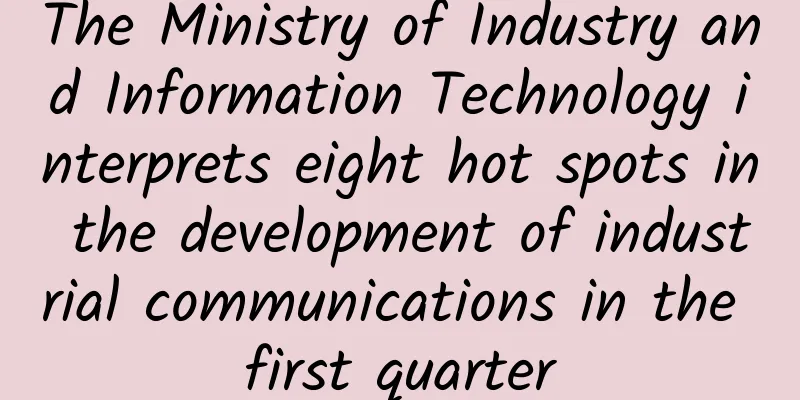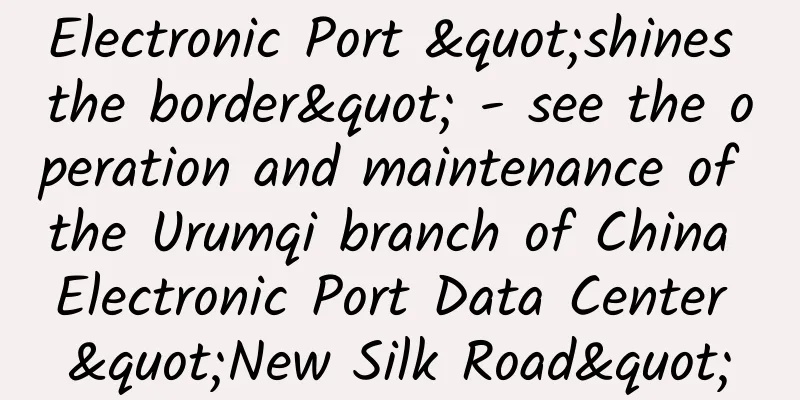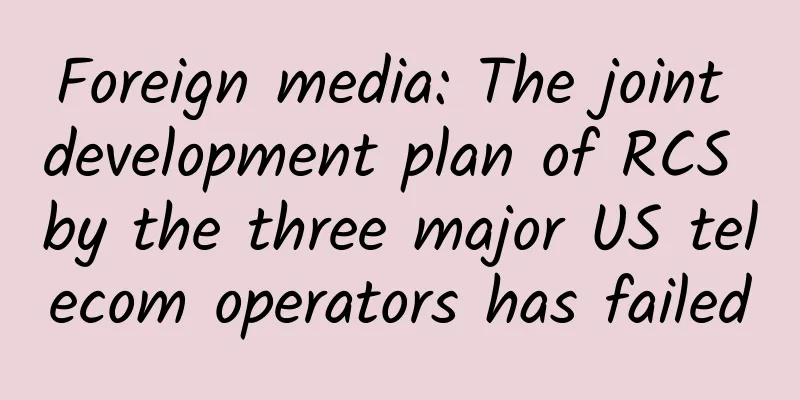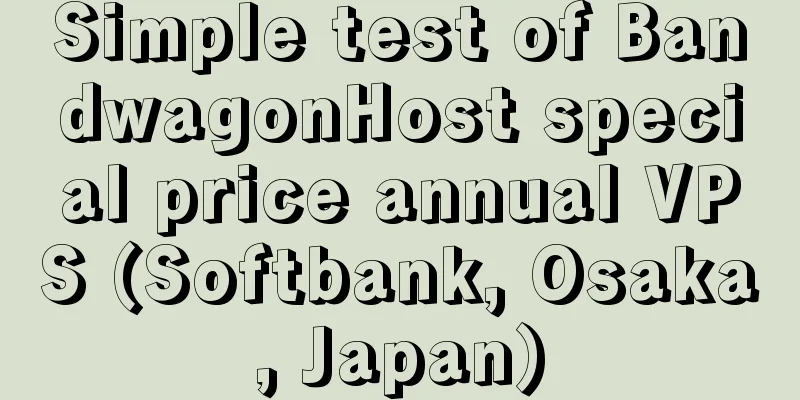The Ministry of Industry and Information Technology interprets eight hot spots in the development of industrial communications in the first quarter

|
On April 25, the State Council Information Office held a press conference on the development of the industry and communications industry in the first quarter of 2018. Chen Yin, chief engineer and spokesperson of the Ministry of Industry and Information Technology, introduced the development of the industry and communications industry in the first quarter of 2018, and answered questions from reporters on the spot with Wen Ku, director of the Information and Communications Development Department of the Ministry of Industry and Information Technology, and Huang Libin, deputy director of the Operation Monitoring and Coordination Bureau of the Ministry of Industry and Information Technology, on hot topics such as the development of the integrated circuit industry, speed increase and fee reduction, narrowband Internet of Things, and the construction of a strong manufacturing country.
Hot topic 1: Reducing automobile import tariffs Reporter: In his keynote speech at the just concluded Boao Forum for Asia, General Secretary Xi Jinping mentioned that restrictions on foreign investment in automobiles should be relaxed as soon as possible and automobile import tariffs should be lowered. What impact will this have on related domestic industries? How will the Ministry of Industry and Information Technology implement it? Chen Yin: On the occasion of the 40th anniversary of reform and opening up, General Secretary Xi Jinping announced at the Boao Forum for Asia a number of landmark opening-up measures, including substantially relaxing market access, creating a more favorable investment environment, strengthening intellectual property protection, and actively expanding imports. These measures further demonstrated China's determination and resolve to firmly advance a new round of reform and opening up with greater force. Substantially relaxing market access is a win-win move. In accordance with the deployment of the CPC Central Committee and the State Council, the Ministry of Industry and Information Technology will further implement the opening requirements of the automobile, shipbuilding, aircraft and other industries on the basis of the basic opening of the manufacturing industry, and relax the restrictions on foreign investment, especially the restrictions on foreign investment in the automobile industry. The restrictions on foreign investment in special-purpose vehicles and new energy vehicles will be lifted in 2018, the restrictions on foreign investment in commercial vehicles will be lifted in 2020, the restrictions on foreign investment in passenger vehicles will be lifted in 2022, and the restriction on the establishment of no more than two joint ventures in China will be lifted. At the same time, the Ministry of Industry and Information Technology has actively cooperated with the national tariff authorities to study the reduction of automobile import tariffs. China's door to opening up will not close, but will only open wider. In the next step, the Ministry of Industry and Information Technology will thoroughly implement the spirit of General Secretary Xi Jinping's speech at the Boao Forum for Asia, uphold the concept of openness and cooperation, adhere to the market-oriented orientation, integrate more deeply and widely into the global supply system, and promote economic globalization in a more open, inclusive, equitable, balanced and win-win direction. Hotspot 2: Industrial Economic Situation Reporter: Please briefly introduce the performance of the industrial economy in improving development quality in the first quarter, and how you view the next trend of industrial operations this year. Huang Libin: The operation of the industrial economy in the first quarter showed an overall stable, improving and developing trend. The foundation of stability was solid, the pace of progress was steady, the transformation of new and old kinetic energy was carried out in an orderly manner, and the quality and efficiency structure was steadily improved. At the same time, there were concerns in the good situation. The unstable and uncertain factors in economic operation increased, and it still required arduous efforts to maintain the stable and improving situation. The stability is mainly reflected in the overall stability of industrial production. In the first quarter, the added value of industrial enterprises above designated size increased by 6.8% year-on-year, the same as the same period last year, and 0.8 percentage points faster than the expected target set at the beginning of the year. In the first two months, the profit growth rate was 16.1%, and the profit margin of main business income increased by 0.33 percentage points year-on-year, achieving synchronous growth and efficiency. The progress is mainly reflected in the accelerated pace of industrial structure optimization and upgrading. Adhering to the market-oriented and legal means to resolve overcapacity, the task of reducing steel production capacity by 30 million tons this year has been decomposed and implemented, the relocation of hazardous chemical production enterprises has been accelerated, and the work of resolving overcapacity in industries such as cement, flat glass, and electrolytic aluminum has been steadily advancing. The results of capacity reduction have continued to consolidate, and the comprehensive utilization rate of steel industry capacity has returned to a reasonable range of about 80% in the first quarter. The new aspects are mainly reflected in the accelerated cultivation and growth of new momentum. In the first quarter, the added value of strategic emerging industries in the industrial field increased by 9.6% year-on-year, 2.8 percentage points faster than the overall industrial growth rate. The output of products that are in line with the direction of industrial transformation and upgrading, such as smart, green, and high-end products, has grown rapidly. The output growth rates of new energy vehicles, integrated circuits, and industrial robots were 139.4%, 15.2%, and 29.6%, respectively. The investment in high-tech manufacturing increased by 7.9%, and the investment growth rates of medium and high-end manufacturing industries such as urban rail transit, industrial robots, and communication equipment exceeded 70%. At the same time, development expectations continue to improve. The manufacturing purchasing managers' index (PMI) has been above the boom-bust line for 20 consecutive months. In particular, the PMIs of large, medium and small enterprises are in the expansion range. The PMI of small enterprises in March rebounded by 5.3 percentage points from February. Overall, with the world economy continuing to pick up and the domestic economy stabilizing and improving, the industrial economy has made a good start with the simultaneous improvement of quality, efficiency and structure. But at the same time, we should see that the international economic and political situation is undergoing profound and complex changes, the endogenous driving force of economic growth in various countries is different, the development of international trade is still unbalanced, and geopolitical risks are rising one after another, all of which have increased the instability and uncertainty of the current economic operation. From a domestic perspective, industrial transformation and upgrading still face many difficulties that need to be overcome, and the production and operation of enterprises are also constrained by various factors. Some long-standing problems of imbalance and insufficiency in development, intertwined with the impact of the external environment, have increased the difficulty of sustained and healthy development of my country's industrial economy. Regarding the difficulties and problems in economic operations, we adhere to the bottom-line thinking, observe calmly, make timely assessments, respond calmly, seize the initiative, and strive to maintain a stable and positive momentum. Hotspot 3 Integrated Circuit Industry Development Reporter: Will China's plan to develop semiconductors be affected by the recent US sanctions on ZTE? Based on this, will China increase its investment in the integrated circuit industry, especially in the second phase of the integrated circuit development fund? Chen Yin: Recently, my country’s Ministry of Commerce and Ministry of Foreign Affairs have responded to the ZTE incident and stated China’s position. The integrated circuit industry is a technology-intensive, talent-intensive and capital-intensive industry. In recent years, driven by market demand, my country's integrated circuit industry has developed rapidly, its overall strength has been significantly enhanced, and the scale of the industry has grown rapidly. However, there are still gaps in chip design, manufacturing capabilities and talent team building, and development needs to be further accelerated. China's electronic information industry has a vast market. We will adhere to the path of innovative development and open cooperation, accelerate the breakthrough of core technologies, and strengthen international industrial cooperation. We are confident that we will work with countries around the world to seek welfare and common progress for human development. As for the Integrated Circuit Development Fund, the second phase of fundraising is now underway, and we also welcome companies from all parties to participate in the fund raising. Hotspot 4 speed increase and fee reduction Reporter: This year's "Government Work Report" proposed to cancel the data "roaming" fee. The Ministry of Industry and Information Technology also clearly stated that the date will be July 1. What is the current progress? Can it be successfully completed before July 1? Wen Ku: The work of speeding up and reducing network fees is a topic of great concern to the whole society. The Party Central Committee and the State Council attach great importance to it. In particular, on March 5 this year, the "Government Work Report" proposed to increase the efforts to speed up and reduce network fees, so that the people and enterprises can benefit from it, and to boost the construction of a digital China, a manufacturing power, and a network power. The Ministry of Industry and Information Technology resolutely implements the decisions and deployments of the Party Central Committee and the State Council, and has done a lot of work in this regard. Before the two sessions are over, it will work with relevant departments to promote related work in a solid manner. The leaders of the Ministry of Industry and Information Technology immediately publicized and interpreted the measures to cancel the "roaming" fees for traffic, and basic telecommunications companies also quickly came up with specific measures and actively deployed them. In terms of reducing traffic fees, in order to implement the goal of reducing fees by 30% as proposed in the Government Work Report, basic telecommunications companies have sorted out five measures:
In terms of home broadband, the company will continue to implement preferential home broadband and launch preferential broadband tariff plans. In particular, it will carry out some speed increases without price increases and increase the promotion of fixed convergence packages. In terms of broadband private lines for small and medium-sized enterprises, the company will further reduce the price of private lines, which is expected to drop by 10% to 15% this year. Some special products have also been launched for some small and medium-sized enterprises to support their "double innovation". In terms of network speed increase, we will further promote the increase of user broadband speed this year. Our guiding goal this year is to hope that more than half of household broadband users can use broadband speeds of more than 100 Mbps. At the same time, in the first half of this year, we will issue relevant standards for upstream speeds, which users have been concerned about. Hot Topics 5: Manufacturing Powerhouse Reporter: China can be considered a manufacturing powerhouse, but it is still not a manufacturing powerhouse. There are many things we can design but cannot manufacture. In view of this situation, does the Ministry of Industry and Information Technology have any specific solutions to improve it? Chen Yin: The report of the 19th CPC National Congress pointed out that China's economy has shifted from a stage of high-speed growth to a stage of high-quality development. To build a modern economic system, we must focus on the development of the real economy and improve the quality of the supply system. This year's "Government Work Report" proposed to accelerate the construction of a strong manufacturing country, comprehensively carry out quality improvement actions, and bring about a quality revolution in China's manufacturing. Manufacturing is the main body of the national economy and the key and focus of promoting high-quality economic development. We will take Xi Jinping Thought on Socialism with Chinese Characteristics for a New Era as our guide, fully implement the new development concept, focus on meeting the people's growing needs for a better life, take deepening supply-side structural reform as the main line, adhere to quality first and efficiency first, strive to improve the quality of the manufacturing supply system, continuously enhance the adaptability of the supply structure to demand upgrades, and accelerate the pace of high-quality development of the manufacturing industry.
Hotspot 6: Narrowband Internet of Things Reporter: What are the latest developments in the narrowband Internet of Things layout of the three major operators? When will narrowband Internet of Things be commercially available on a large scale in my country? What is the key direction of the next development? Wen Ku: Narrowband Internet of Things (NB-IoT) is a new technology and a very important technology. In order to promote the development of this technology, the Ministry of Industry and Information Technology also issued a special notice last year on the "Notice on Comprehensively Promoting the Construction and Development of Mobile Internet of Things (NB-IoT)". At present, the construction of nearly 400,000 NB-IoT base stations across the country has gradually achieved wide coverage across the country. This year, the three basic telecommunications operators are expected to add another 300,000 base stations. At the same time, the Internet of Things technology is not only used in communication companies, but more importantly in some applications in vertical industries. Various telecommunications operators and related companies in the industrial chain have established various cooperation and alliances to jointly work in chips, modules, terminals, networks, and applications to promote widespread applications. At present, many provinces and cities have started large-scale commercial use of NB-IoT, such as smart water meters, smart gas meters, shared bicycles, smart parking lots and other aspects closely related to daily life. Smart home appliances and smart door locks using NB-IoT technology are also gradually emerging. In addition to daily life, NB-IoT has also developed a series of applications in industrial, agricultural and animal husbandry production activities. In the next step, we will further optimize and promote NB-IoT network coverage; improve the quality of use, and effectively support the development of various industrial chains in the whole society; more importantly, we must also promote some large-scale application promotion efforts, promote NB-IoT to develop into more fields, form economies of scale, promote cost reduction, and promote the prosperity and development of the NB-IoT industry. Hot Spot 7 National Manufacturing Innovation Center Reporter: The Ministry of Industry and Information Technology has approved five national manufacturing innovation centers. What results have the innovation centers achieved in improving innovation capabilities? Chen Yin: Since 2016, the Ministry of Industry and Information Technology has accelerated the organization and construction of innovation center projects in accordance with the "Made in China 2025" plan and deployment, and has also promoted the work of provincial manufacturing innovation centers. So far, five national manufacturing innovation centers have been built, namely national power batteries, additive manufacturing, information optoelectronics, printing and flexible displays, and robots. The relevant provinces have cultivated about 60 provincial manufacturing innovation centers, and initially formed a manufacturing innovation system with innovation centers as nodes. In accordance with General Secretary Xi Jinping's requirements for deploying innovation chains around the industrial chain and allocating capital chains around the innovation chain, the Ministry of Industry and Information Technology has focused on building and improving a manufacturing innovation system with enterprises as the main body, market-oriented, and deep integration of industry, academia and research to support the high-quality development of the manufacturing industry.
Hotspot 8: Boosting industrial investment Reporter: The current growth rate of industrial investment in my country has declined. What measures will the Ministry of Industry and Information Technology take to boost confidence in industrial investment? Huang Libin: There are many reasons for the slowdown in industrial investment growth. Overall, although the current industrial investment growth rate has slowed down, the investment structure is constantly being optimized, and new drivers and transformation and upgrading investments are active. At present, my country's economy has shifted from high-speed growth to high-quality development. Industrial transformation and upgrading still requires a moderate investment intensity. In the next step, we will take multiple measures to stabilize industrial investment and promote long-term sustainable development of industry. There are four main measures:
|
<<: 4 Ways to Save Money in Your Data Center
>>: The first batch of 5G mobile phones are coming. What are the "killer" applications?
Recommend
Do you really understand API Gateway? This article explains the differences and integration between microservice gateway and enterprise application gateway
Software architecture is always evolving and iter...
my country has built the world's largest 4G network
On January 6, the Ministry of Science and Technol...
Microsoft: Open RAN is crucial to network cloudification and the two will eventually merge
In a comment document submitted to the US Federal...
Tong Yongyue from Yunfan Accelerator: What are some things you must know if you want to do media integration well?
The CCBN-BDF Forum was held at the same time as t...
Huawei grandly releases the Intelligent Micro Module 5.0 solution
[51CTO.com original article] On September 17, 202...
Huawei and Chongqing jointly build cloud-based intelligent industries at the first AI Expo
[51CTO.com original article] On the afternoon of ...
Why are drones the first choice for 5G commercial use? The reasons are based on these three points!
In recent years, drones have become more and more...
[12.12] Megalayer: 399 yuan/month-E3-1230/8GB/240G SSD or 1TB HDD/15M/Hong Kong server
Megalayer has launched a special Double 12 event....
4G investment has been frozen. China Telecom: It will take 3-4 years before you can use 4G and 5G with confidence
5G exploded in China in 2020. Have you changed yo...
Wi-Fi - What's new in 6E networks? More interference testing is needed
Just like cellular standards, Wi-Fi standards are...
Magical IPv6, mobile phones can be assigned independent IP addresses
At the end of 2017, the country began to promote ...
Accelerate the deployment of 6G, satellite Internet may become the key
In recent years, communication technology has dev...
What is the function of each layer in the computer network layered model?
1. Layering of computer networks In the computer ...
Friendhosting virtual host/VPS 25% off, 11 data centers VPS half-year payment from 12 euros
Friendhosting has launched an International Teste...
5.5G industry accelerates again! Qualcomm 5G Advanced-ready chip commercial terminals will be launched in the second half of the year
MWC 2023 is about to be held, and the 5G Advanced...









